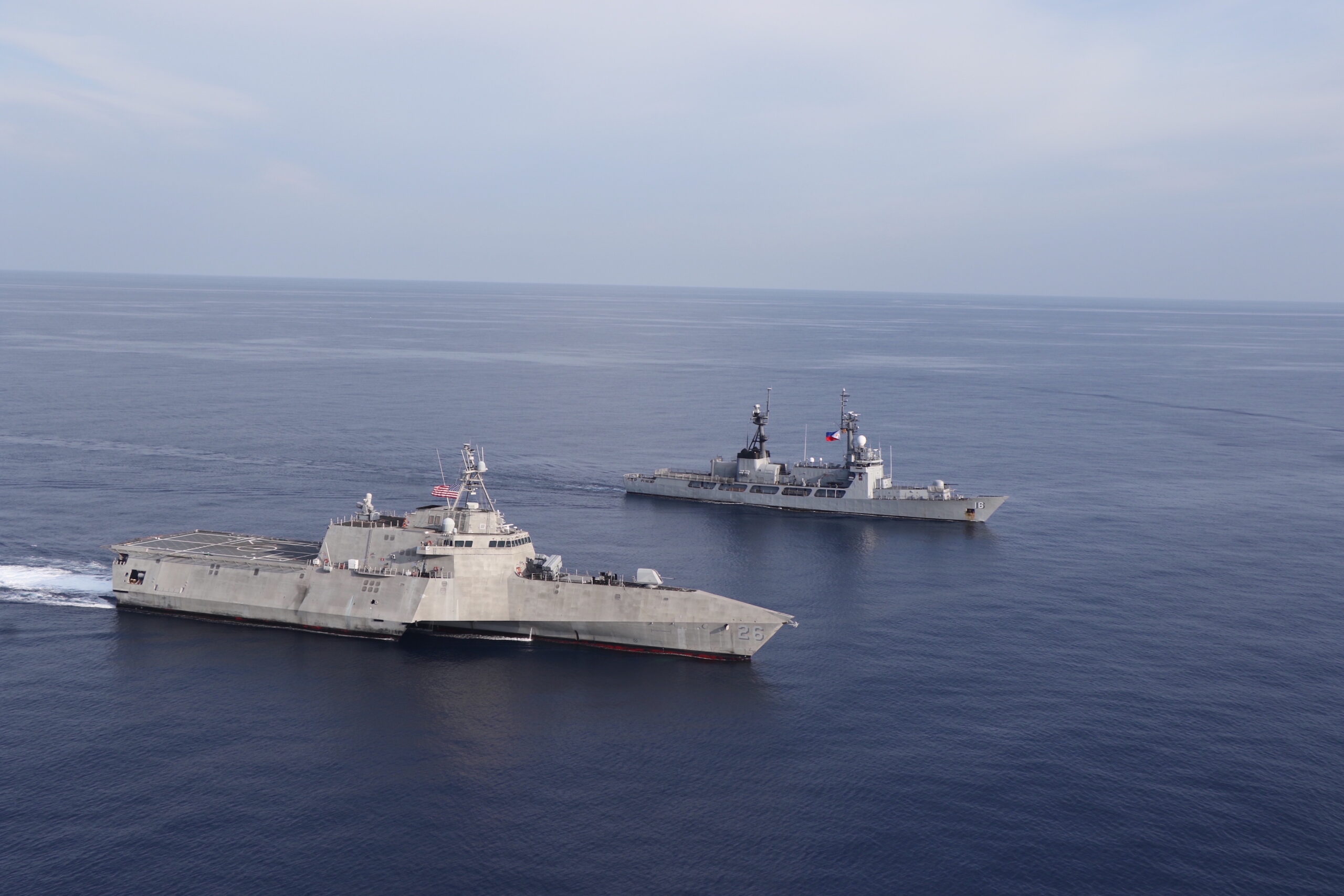The Philippines and the United States navies recently carried out a joint maritime exercise in the South China Sea. The exercise took place on Wednesday and aimed to improve coordination and communication between the two navies.
Enhancing Naval Cooperation
The latest exercise occurred within the Philippines’ exclusive economic zone. It featured two vessels: the USS Mobile (LCS-26) and the BRP Ramon Alcaraz (PS-16). The goal was to strengthen the partnership between the U.S. and Philippine navies. They focused on improving their joint operations and communication.
Philippine military chief Romeo Brawner emphasized the importance of these joint exercises. He said they are crucial for boosting naval capabilities and ensuring effective collaboration to protect maritime interests.
Increased Support from the U.S.
On Tuesday, U.S. Secretary of State Antony Blinken and Defense Secretary Lloyd Austin met with their Philippine counterparts. During their talks, Washington pledged $500 million to support the Philippines’ military and coast guard.
This funding is part of a broader effort to enhance defense cooperation between the two allies. Under Philippine President Ferdinand Marcos Jr., the country has moved closer to Washington and shifted away from deeper ties with China.
There might be more funding next year. A diplomatic source mentioned the possibility of additional budget for the Philippine air force. The source also noted that the Philippines is interested in purchasing U.S. F-16 jets.
Maritime Exercises and Patrols
The recent joint patrol involved the USS Mobile and the BRP Ramon Alcaraz meeting near Leslie Bank. Leslie Bank lies within the Philippines’ exclusive economic zone and is claimed by China. The patrol aimed to show the strength of the alliance and advance combined maritime capabilities.
Capt. Justin Harts, commander of Destroyer Squadron 15, stated that sailing together demonstrates the commitment to coordinating with the Philippine Navy. The joint patrols help support peace and stability in the Indo-Pacific region.
This exercise is part of a series of maritime activities that began last year. These activities aim to bring foreign partners into the South China Sea and the Luzon Strait. Since November 2023, the Philippines has engaged in ten bilateral and multilateral airborne and maritime patrols with nations such as Australia, Japan, the United States and Canada
Escalating Tensions and Recent Developments
Despite starting joint patrols, tensions between the Philippines and China have continued. Incidents such as the use of water cannons and rammings by the China Coast Guard have increased tensions. On June 17, a resupply mission led to a joint patrol by Canadian, Japanese, Philippine, and U.S. forces in the South China Sea.
The Armed Forces of the Philippines recently identified the location of a joint patrol for the first time. The exercise took place at Leslie Bank, about 100 miles from Palawan. While the feature is claimed by China and Vietnam, it has not seen significant active conflict compared to other regional hotspots.
Following the exercise, the BRP Ramon Alcaraz resumed patrol duties and discovered a sunken Vietnamese fishing vessel at Jackson Atoll. The crew was rescued by another boat.
Recent Resupply and Future Plans
The Philippines successfully resupplied its outpost at Second Thomas Shoal four days before to the joint exercise. The supply was a component of an arrangement with China that has not yet been made public. The pact has been openly contested by Manila and Beijing, but U.S. Secretary of State Antony Blinken applauded the endeavor and asked China to uphold it.
The combined patrol and the visit to the Philippines by US Secretary of Defense Lloyd Austin fell on the same day. During his visit, he met with high-ranking officials to finalise plans for increased defense cooperation. Austin also visited Subic Bay to explore potential defense industrial base opportunities at the former U.S. naval base.
In summary, the recent joint maritime exercise highlights the growing defense partnership between the U.S. and the Philippines and its navies. As tensions in the South China Sea continue, these joint efforts aim to strengthen navies, cooperation and support regional stability.

